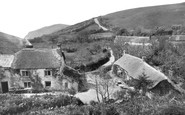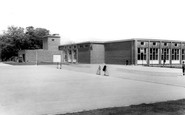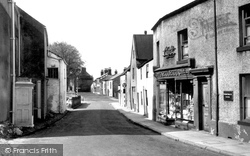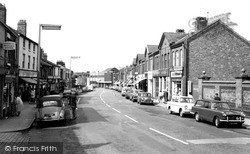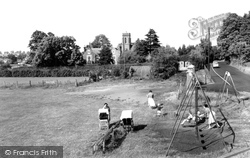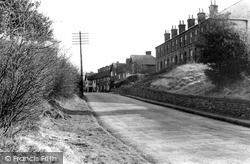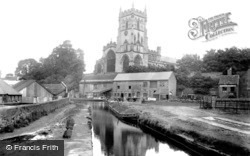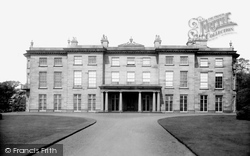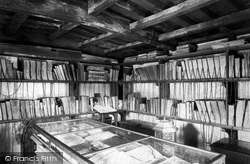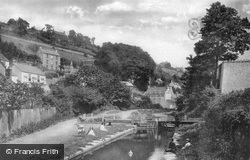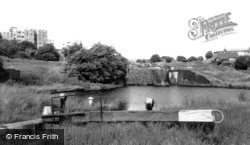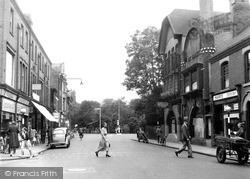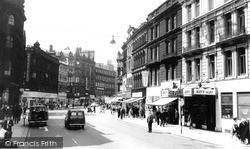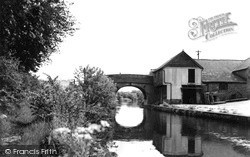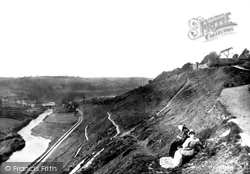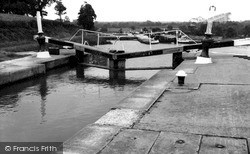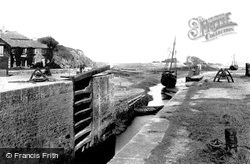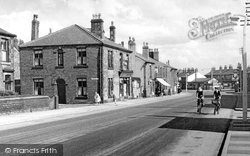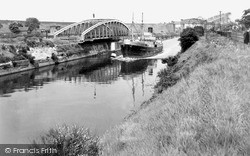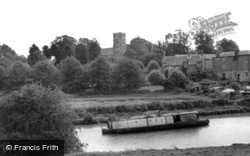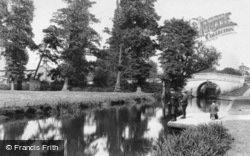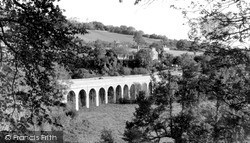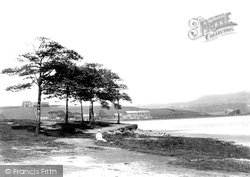Merry Christmas & Happy New Year!
Christmas Deliveries: If you placed an order on or before midday on Friday 19th December for Christmas delivery it was despatched before the Royal Mail or Parcel Force deadline and therefore should be received in time for Christmas. Orders placed after midday on Friday 19th December will be delivered in the New Year.
Please Note: Our offices and factory are now closed until Monday 5th January when we will be pleased to deal with any queries that have arisen during the holiday period.
During the holiday our Gift Cards may still be ordered for any last minute orders and will be sent automatically by email direct to your recipient - see here: Gift Cards
Photos
2 photos found. Showing results 421 to 2.
Maps
31 maps found.
Books
Sorry, no books were found that related to your search.
Memories
639 memories found. Showing results 211 to 220.
Burslem Baths And The Wright's Pie Shop After (Top Of Nile St)
My memories start around 1946 and go on 'forever' - but the years I want to mention here are those of my Cobridge schooldays and the Burslem connection to those schooldays. I lived on ...Read more
A memory of Burslem in 1946 by
Bude In The 1950s.
I remember the primary school and the little banks behind it which seemed huge to us then! We used to go mussel picking on the rocks and walk along the downs with buttercups and daisies, sadly now much reduced due to soil erosion. ...Read more
A memory of Bude in 1956 by
Brentford Arriving By Bike Along The Canal.
I am cycling along the canal and have just passed under the railway bridge. I pass under the great metal warehouse. Quickly there is a rattle as I cross the little bridge by the gauging lock, which is ...Read more
A memory of Brentford in 1961 by
A Summer Evening In Hanwell.
I meet one of my friends, he is going fishing, it is around 6:30pm. We go down Green Lane to the canal and turn right over the River Brent. He starts to fish between the locks. Mr Hunt from Studley Grange Road ...Read more
A memory of Hanwell in 1962 by
War Years
Ths is the memory of my cousin, Audrey, aged 79. We were talking yesterday and she told me how, with her mother, she had travelled from Lancashire to see her father who was stationed in the area. They had to get permission to ...Read more
A memory of Dibden Purlieu in 1943 by
Drakeholes, Gatehouses
Drakeholes is a great little spot on the Chesterfield Canal. Famous for its tunnel and the White Swan pub, or "Mucky Duck" as it was once known. Above the tunnel sat two small derelict Gatehouses, once the grand entrance ...Read more
A memory of Drakeholes
Southall Town 50's 60's 70's 80's
Between 1950 - 1980's the family owned a bakers shop at 84 High Street. P.G.WOODFORD & SON (opposite the Police Station). If anyone has memories of this period it would be good to get in touch. I ...Read more
A memory of Southall by
Clifton Road School
I also remember Miss Curtain and Miss Lidstone the stairs and the ice slides, Alan Newall lived in Regina road past the cross road towards the canal i lived at no 57 with my cousin Colin James who was a good friend of Alans. We ...Read more
A memory of Southall by
Footbridge Over The Canal
I recall the day the iron footbridge was lowered into place over the canal. I'm probably wrong but I think it was lowered into its position by a huge crane, how they got it to the bridge I've no idea. Have I dreamt this ...Read more
A memory of Carnforth in 1945 by
Early '50s
Lived Wolverley - Just a few items on Kiddr from dim recall -town cinema - a screening of a western, Jeff Chandler as Indian warrior - Cochise? -a bigtop circus - Billy Smart or similar, at top of the big hill nr rly Station ...Read more
A memory of Kidderminster in 1952 by
Captions
749 captions found. Showing results 505 to 528.
Church Street leads from the Market Square down to the Lancaster Canal, where a basin facilitated the handling of cargo on and off the barges.
This view towards the Ship Canal shows London Road free of today's endless stream of traffic.
Cookley is a rather over-grown village overlooking the River Stour; since the 1700s, it has also overlooked the Staffordshire and Worcestershire Canal, which links Stourport and Kidderminster with
Cookley is a rather over-grown village overlooking the River Stour; since the 1700s, it has also overlooked the Staffordshire and Worcestershire Canal, which links Stourport and Kidderminster with
In later years, both the River Stour and the associated canal system were used to transport carpets on the first stage of their journeys to the marketplaces of the world.
Stone for the building was cut on site by machinery brought to the estate by way of the Leeds & Liverpool Canal. The timber came from the Haigh and from Crawford's estates in Jamaica.
The volume of Raleigh's 'History of the World' has a hole burnt through 104 pages, supposedly caused by the poet Matthew Prior who fell asleep with an unguarded candle nearby.
This is the now-derelict Thames and Severn canal which linked the two rivers. As it climbs the area known as Golden Valley, the scenery is magnificent.
These are the Delph Locks at Brierley Hill on the Dudley No 1 Canal. They are universally known as 'The Nine', despite the fact that there are only 8.
On the River Erewash, close to the confluence of the Trent with Leicestershire's River Soar, this Derbyshire town was bisected by the Erewash Canal in 1779 and made readily accessible by
Just a few minutes walk from here, the Leeds & Liverpool Canal links up with the River Aire and the Aire & Calder Navigation, providing Leeds with an inland waterway from the Mersey to the Humber.
A tranquil mid-summer view of the Grand Junction or Union Canal, which reached the nearby town of Tring in 1799 as part of a massive construction, designed to link London and Birmingham and which subsequently
The river Torridge is to the left, and the straight line just to the right of it is the old course of the Rolle (or Great Torrington) canal.
This was part of a modernising programme undertaken in the 1930s in an unsuccessful attempt to enable the Grand Union Canal to compete with the Great Western Railway.
A further boost to the port's success came with the construction of a spur to the Lancaster Canal in 1826, and a huge basin was built to accommodate the barges that transported the cargoes inland.
This is Bude Canal Sea Lock in 1893, two years after the waterway had been reduced to the 1.25 mile stretch to Rodd's Bridge; in reality it was little more than an extension of the harbour, which continued
Situated below Winter Hill on Rivington Moor, Adlington developed as a textile town before the advent of the railway because of its proximity to the Leeds and Liverpool Canal, which runs
Whilst the Latchford Viaduct is high enough to allow the tallest ships to pass beneath, a series of swing bridges allow vessels to pass through most road crossings along the canal.
In the foreground is the Grand Union Canal, with the houses of Blisworth and the 15th-century tower of the church to be seen on the opposite bank.
Here, children are trying their luck at fishing in the Aylesbury Arm of the Grand Union Canal. Just beyond the bridge is the delightfully named Hills and Partridges Lock.
Three hundred yards further north is Rennie's 1805 Dundas Aqueduct carrying the canal across the River Avon.
Castleton developed largely because of its proximity to the canal and railway, making it suitable for mill building.
They not only provided the post office, but also newspapers and the posters outside kept the locals abreast of events both national and local; sweets, chocolates, tinned foods, candles and basic
It was this canal, financed by the Duke of Bridgewater and built in 1761 by James Brindley, that was to bring about a complete change in the transportation of industrial materials and manufactured goods
Places (1)
Photos (2)
Memories (639)
Books (0)
Maps (31)

